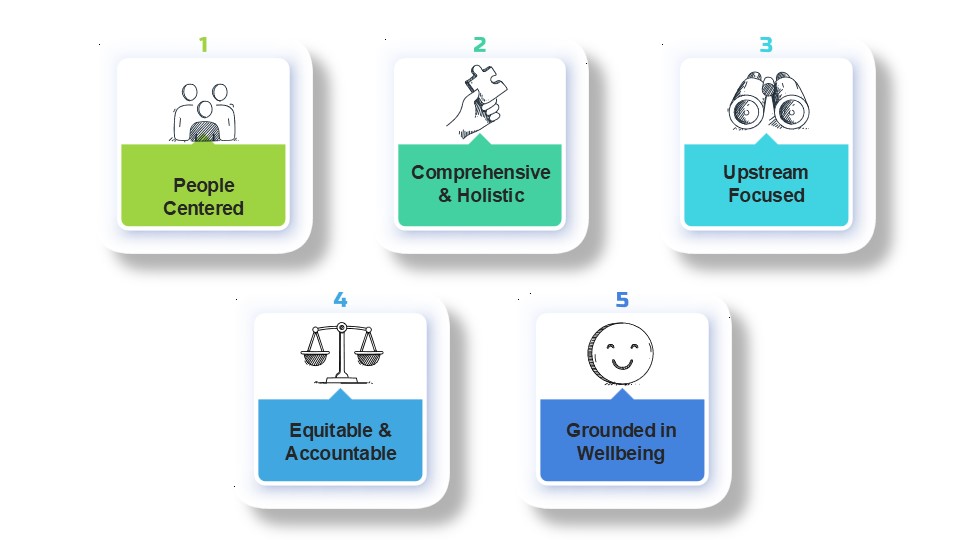
ISPOR's Strategic Plan 2030 introduced the Society's new vision for a world where healthcare is accessible, effective, efficient, and affordable for all. An integral element of this strategy is viewing health through a more holistic lens that looks at all the key factors that impact an individual's health—whole health.
![]()
What Is Whole Health?
Whole health expands the definition of value by recognizing the physical, behavioral, socioeconomic, environmental, and spiritual dimensions of health. A whole health approach prioritizes enhancing health outcomes that matter to individuals while promoting well-being for all.1

![]()
Learn From Our Experts
![]()
"According to the World Economic Forum, social determinants of health, including living circumstances, income, and education, are crucial to health equity and have a significant impact on health outcomes" 2
![]()
Foundational Elements of Whole Health
Five foundational elements of whole health were identified by the US National Academies of Sciences, Engineering, and Medicine.1

![]()
Applying Whole Health to Health Economics and Outcomes Research
Expanding the Definition of Value in HEOR
Taking a whole health view calls on HEOR professionals to use measures that are not restricted to the physical and mental health of individuals but also their social well-being. Additionally, a whole health approach calls for patient centricity by accounting for how patients define value considering their goals, preferences, and lived experiences. To pursue a whole health strategy, HEOR professionals have much to learn and contribute through collaborations with professionals in other disciplines who specialize in sectors outside of healthcare, social services being one example. Guidance for HEOR professionals seeking to apply whole health to the field include:
- Account for how patients define value considering their goals, preferences, and lived experiences
- Use measures of health benefit that are not restricted to the physical and mental health of individual but also their economic and social well-being
- Employ time horizons consistent with the time required for patient to experience the value of health interventions
- Consider value more broadly from the individual, family, community, sector, and multisystem perspectives
- Further the use of value assessment to include interventions other than traditional healthcare treatments, such as preventative measures, digital health interventions, and tools, and health-improving programs that are administered outside of the healthcare system
- Apply RWD methods to expanded datasets that include healthcare data as well as data from other relevant systems
- Where relevant to fit specific interventions, expand the scope of stakeholders engaged to include those concerned with health but beyond healthcare, such as social and community services, labor, education, corrections, and environment1
![]()
References
1Taking Health Economics and Outcomes Research Forward: Expanding the Definition of Value to Include Whole Health; Pizzi, Laura T. et al.; Value in Health, Volume 28, Issue 5, 702 - 704
2Whole Health: A Global Perspective; Nabyonga-Orem, Juliet et al.; Value in Health, Volume 28, Issue 5, 705 - 708

